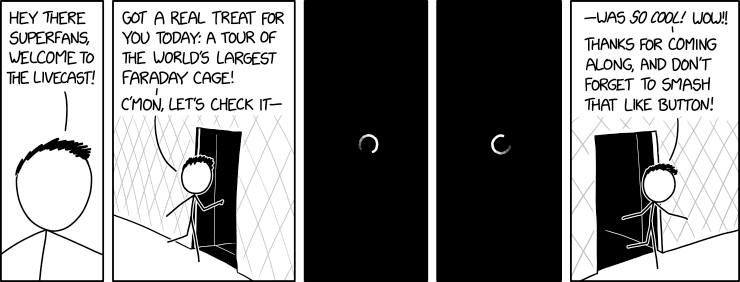A jack of many hobbies and a master of none - spending lots of time on amateur/ham radio, running, and technology.
Wednesday, July 29, 2020
Plus ça change,...
...plus c'est la même chose.
Labels:
Society
Tuesday, July 28, 2020
Monday, July 27, 2020
Thursday, July 23, 2020
Garmin Hit by Ransomware
I couldn't upload my run this morning... turns out Garmin is dealing with a ransomware attack.
Labels:
Garmin,
Running,
Security,
Technology
Wednesday, July 22, 2020
On-Call
Being on-call has been part of the job for as long as I can remember... first carrying pagers then alpha-numeric pagers then Nextels then Blackberries. However, I'm not sure I would have any interest in a recent job posting that included this:
"Be available as needed to rectify IT emergencies. Must answer all forms of communication immediately."
Labels:
Jobs,
Technology
Friday, July 17, 2020
Intellectual Discourse - Ham Radio Reddit
First - Baofeng Bucks:
"Chinese communist party takes your Baofeng bucks and puts them right in the 'turn America into one big concentration camp' fund. They don't want you dead, they want your whole life. Call me crazy, see what happens.EDIT: Changed 'Baofeng dollars' to 'Baofeng bucks' because it's funnier."
"Japanese anime porn artists take your Yaesu Yen and put them right into the "get Americans addicted to tentacle hentai" fund. They don't want you dead, they want your whole life. Call me crazy, see what happens."
The Screwtape Letters
C.S. Lewis' The Screwtape Letters is on sale for $1.99 as a Kindle ebook. It's an easy, but thought provoking read.



Wednesday, July 15, 2020
International Space Station
We watched the ISS go overhead last night. I was surprised by how bright it was.
You can track it here and find times when you might be able to see it.
And, of course, they have a radio on the space station:
"The crew can operate the 2-meter packet radio in unattended mode, and hams can make contacts with the ISS station when the crew members are working. Hams can also communicate with each other using the ISS packet (computer) radio mode, or receive slow scan television mode images. It all depends on what equipment is in service in space.
A typical ground station for contacting the ISS station includes a 2-meter FM transceiver and 25-100 watts of output power. A circularly polarized crossed-Yagi antenna capable of being pointed in both azimuth (North-South-East-West) and elevation (degrees above the horizon) is desirable. But successful contacts have even been made with vertical and ground plane antennas."
Subscribe to:
Posts (Atom)

